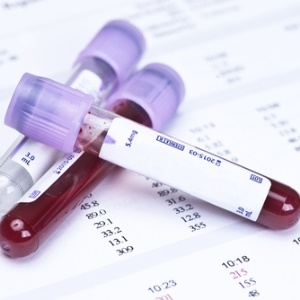
Haemoglobin (Hb) is a protein contained in red blood cells. Glucose in the blood can pass freely in to the red cell, and binds to hemoglobin. This is a normally a reversible bond. However, if the blood glucose level is too high and remains that way for too long, this bond becomes permanent, and this glycosylated protein, HbA1C (haemoglobin+glucose) remains in the red cell until the cell dies. The average red cell life span is 120 days.
If a blood sample reveals more glycosylated Hb than normal, it can only be due to the blood glucose having been too high for a significant time. Excess HbA1c indicates poor control of blood glucose for life of the cell, that is, for the last 120 days.
Why is the test done?
The amount of HbA1C is directly proportional to the blood glucose level over the previous three months. Measuring the HbA1C can thus be used to:
- Check blood sugar control in persons suspected to be diabetic, and
- Monitor glucose control achieved in diabetics on treatment.
A fasting blood sugar test is still important in deciding on treatment, but the HbA1C gives better information on how well the diabetes is being controlled over a period of time. The test should be done twice yearly in all diabetics, but every three months for those who cannot achieve goal glucose levels, or whose treatment has been changed.
Most diabetes societies agree that HbA1C levels should be below 6.5-7 percent to minimise the risk of diabetes complications, such as kidney failure, blindness, stroke and heart attack.
How is the test done?
This is a simple blood test. After identifying a suitable vein, the skin is cleaned with antiseptic. The vein is distended with a tourniquet, a needle and syringe are used to draw a sample of blood, after which the tourniquet is removed, the needle is withdrawn, and the small puncture wound is covered and compressed for a few minutes to stop any bleeding.
It is not necessary to fast before this test.
Factors affecting the test
Because the test depends on the number and viability of red blood cells (RBCs), any condition affecting this could also affect the HbA1C reading. The following conditions could influence the test:
- Anaemia - iron, B12 or folate deficiency,
- Patients on haemolysis, and
- Those with abnormal Hb, which behave differently from normal Hb.
Most clinicians advise using the test for monitoring established diabetes rather than for screening or as the sole diagnostic test.
Risks
The risks are those for any routine blood test:
- Bleeding from the puncture site,
- Bruising from slight bleeding into the skin,
- Haematoma -a lump from bleeding under the skin, and
- Infection - always an added risk in diabetics.
Other associated tests
For the diagnosis of diabetes mellitus, a fasting blood glucose (FBG) and a glucose tolerance test (GTT) remain the gold standard.
For monitoring, FBG can be done, but this combined with HbA1C testing is the best combination.
(Dr A G Hall)




 Publications
Publications
 Partners
Partners















